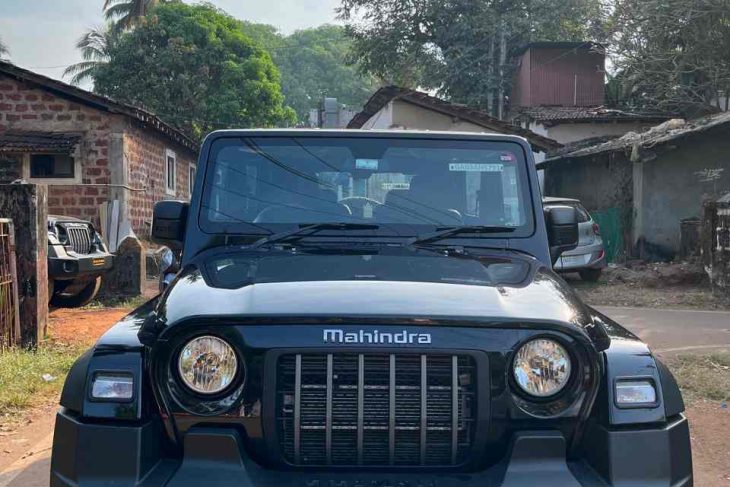
“Experience the World: Discover Top Cultural Festivals That Inspire Your Next Adventure!”
Introduction
Cultural festivals around the world offer a vibrant glimpse into the traditions, art, and heritage of diverse communities. These events celebrate everything from music and dance to food and folklore, providing travelers with unique experiences that go beyond typical sightseeing. Whether it’s the colorful parades of Rio Carnival, the spiritual rituals of Diwali in India, or the artistic expressions at the Edinburgh Festival Fringe, each festival presents an opportunity to immerse oneself in local culture. Planning your travels around these top cultural festivals not only enriches your journey but also fosters a deeper understanding of the world’s rich tapestry of customs and practices.
Diwali: The Festival of Lights in India
Diwali, often referred to as the Festival of Lights, is one of the most significant and widely celebrated festivals in India, embodying a rich tapestry of cultural traditions and spiritual significance. This vibrant festival typically occurs in October or November, marking the triumph of light over darkness and good over evil. As such, it presents an opportune moment for travelers to immerse themselves in the diverse cultural heritage of India while experiencing the warmth and hospitality of its people.
The origins of Diwali can be traced back to various ancient Indian texts, with different regions attributing unique stories to the festival. In many parts of India, Diwali commemorates the return of Lord Rama to Ayodhya after a 14-year exile, during which he defeated the demon king Ravana. In other traditions, it celebrates the victory of Lord Krishna over the demon Narakasura or honors the goddess Lakshmi, the deity of wealth and prosperity. Regardless of the specific narrative, the underlying theme of Diwali remains consistent: the celebration of light, hope, and renewal.
As the festival approaches, cities and towns across India transform into a kaleidoscope of colors and lights. Homes are adorned with intricate rangoli designs made from colored powders, flower petals, and even rice, while oil lamps, known as diyas, are lit to illuminate the surroundings. This practice not only enhances the aesthetic appeal of the environment but also symbolizes the dispelling of ignorance and the welcoming of knowledge and wisdom. The atmosphere is further enriched by the sounds of laughter, music, and the crackling of fireworks, which fill the air with a sense of joy and festivity.
Traveling to India during Diwali offers a unique opportunity to witness the festival’s grandeur firsthand. Major cities such as Delhi, Mumbai, and Jaipur host elaborate celebrations that attract both locals and tourists alike. In Delhi, the markets come alive with vibrant decorations and festive sales, while the iconic India Gate is illuminated with lights, creating a breathtaking sight. Meanwhile, in Mumbai, the streets are filled with people celebrating with family and friends, and the skyline is adorned with spectacular firework displays that light up the night sky.
Moreover, participating in Diwali celebrations allows travelers to engage with local customs and traditions. Many families invite guests to join in their festivities, offering delicious sweets and snacks that are an integral part of the celebration. Traditional dishes such as gulab jamun, jalebi, and various savory treats are prepared in abundance, showcasing the culinary diversity of Indian cuisine. Additionally, cultural performances, including dance and music, are often organized in public spaces, providing an enriching experience that highlights the artistic heritage of the region.
In conclusion, Diwali stands as a testament to the enduring spirit of community and celebration in India. For those seeking to explore the cultural depths of this vibrant nation, planning a visit during this festival is an unparalleled opportunity. The warmth of the festivities, the beauty of the lights, and the richness of the traditions create an unforgettable experience that resonates with the essence of Indian culture. Thus, as travelers consider their next adventure, Diwali offers a compelling reason to journey to India, where the Festival of Lights illuminates not only the physical landscape but also the hearts of those who partake in its joyous celebrations.
Carnival: A Vibrant Celebration in Brazil
Carnival in Brazil stands as one of the most vibrant and exhilarating cultural festivals in the world, attracting millions of visitors each year. This grand celebration, which typically occurs in February or March, just before Lent, is renowned for its lively parades, elaborate costumes, and infectious music. The roots of Carnival can be traced back to European traditions, particularly those of the Portuguese and Spanish, but over the centuries, it has evolved into a uniquely Brazilian spectacle that reflects the country’s diverse cultural heritage.
As the festival approaches, cities across Brazil begin to buzz with anticipation, but it is in Rio de Janeiro where Carnival reaches its zenith. The iconic Sambadrome, a purpose-built venue, becomes the epicenter of the festivities, showcasing samba schools that compete in a dazzling display of creativity and artistry. Each samba school spends months preparing for this moment, designing intricate floats and choreographing elaborate dance routines that tell stories steeped in Brazilian culture and history. The competition is fierce, and the atmosphere is electric, as thousands of spectators gather to witness the spectacle unfold.
In addition to the grand parades, street parties known as “blocos” take over the neighborhoods, inviting locals and tourists alike to join in the revelry. These informal gatherings feature live music, dancing, and a sense of community that is palpable. Participants often don colorful costumes, ranging from simple masks to extravagant outfits, embodying the spirit of Carnival. The music, predominantly samba, fills the air, creating an infectious rhythm that encourages everyone to dance and celebrate together. This communal aspect of Carnival is one of its most appealing features, as it fosters a sense of unity and joy among people from all walks of life.
Moreover, Carnival is not solely confined to Rio de Janeiro; cities such as Salvador, Recife, and Olinda also host their own unique celebrations. In Salvador, for instance, the festival is characterized by its Afro-Brazilian influences, with a focus on traditional music genres like axé and pagode. The streets come alive with vibrant parades featuring large sound trucks, known as “trios elétricos,” that transport musicians and dancers through the city, encouraging crowds to follow along in a euphoric procession. This variation in celebration styles across different regions highlights the rich tapestry of Brazilian culture and the diverse influences that shape the Carnival experience.
As Carnival draws to a close, the sense of camaraderie and celebration lingers in the air, leaving participants with lasting memories and a deeper appreciation for Brazilian culture. The festival serves not only as a time for revelry but also as a reminder of the resilience and creativity of the Brazilian people. It encapsulates the spirit of joy and freedom that defines the nation, making it an essential experience for anyone seeking to understand the heart and soul of Brazil.
In conclusion, planning a trip around Carnival offers an unparalleled opportunity to immerse oneself in a celebration that is both culturally significant and immensely enjoyable. The festival’s vibrant atmosphere, coupled with its rich traditions and communal spirit, makes it a must-see event for travelers. Whether one finds themselves in the bustling streets of Rio de Janeiro or the lively neighborhoods of Salvador, the experience of Carnival is sure to leave an indelible mark, creating memories that will last a lifetime.
Oktoberfest: The World’s Largest Beer Festival in Germany
Oktoberfest, held annually in Munich, Germany, stands as the world’s largest beer festival, attracting millions of visitors from across the globe. This iconic event, which typically runs from late September to the first weekend in October, is not merely a celebration of beer; it is a vibrant showcase of Bavarian culture, tradition, and hospitality. Originating in 1810 as a royal wedding celebration for Crown Prince Ludwig and Princess Therese, Oktoberfest has evolved into a grand festival that spans 16 to 18 days, featuring a rich tapestry of activities, entertainment, and culinary delights.
As one approaches the festival grounds, the sight of massive beer tents, amusement rides, and traditional Bavarian decorations creates an atmosphere of excitement and anticipation. The festival is held at Theresienwiese, a sprawling area that transforms into a bustling hub of activity. Visitors can explore numerous beer tents, each operated by different breweries, where they can sample a variety of traditional German beers, particularly the Märzen style, which is brewed specifically for the festival. The tents, which can accommodate thousands of guests, are often filled with lively music, traditional folk dances, and the clinking of steins, creating an infectious sense of camaraderie among attendees.
In addition to the beer, Oktoberfest offers a plethora of culinary experiences that highlight the region’s gastronomic heritage. Guests can indulge in an array of traditional Bavarian dishes, such as pretzels, sausages, roast chicken, and various regional specialties. The festival also features numerous food stalls and vendors, ensuring that there is something to satisfy every palate. This culinary aspect of Oktoberfest not only enhances the overall experience but also provides a deeper understanding of Bavarian culture and its emphasis on communal dining and celebration.
Moreover, Oktoberfest is not solely about beer and food; it is also a cultural extravaganza that showcases the rich traditions of Bavaria. Throughout the festival, visitors can enjoy a variety of performances, including traditional music, folk dancing, and parades featuring locals dressed in traditional attire, such as lederhosen and dirndls. These cultural displays offer a glimpse into the region’s history and customs, fostering a sense of connection between visitors and the local community.
As the festival progresses, various events and competitions add to the excitement. From traditional games to contests that test strength and skill, these activities engage attendees and encourage participation. The lively atmosphere is further enhanced by the presence of amusement rides and attractions, making Oktoberfest a family-friendly event that appeals to individuals of all ages.
Planning a trip to Oktoberfest requires some foresight, as accommodations in Munich can fill up quickly during the festival period. It is advisable to book lodging well in advance and consider attending on weekdays to avoid the largest crowds. Additionally, understanding the local customs and etiquette can enhance the experience, allowing visitors to fully immerse themselves in the festivities.
In conclusion, Oktoberfest is more than just a beer festival; it is a celebration of Bavarian culture, community, and tradition. With its rich history, vibrant atmosphere, and diverse offerings, it presents an unparalleled opportunity for travelers to experience the heart of Germany. Whether one is a beer enthusiast or simply seeking to explore a unique cultural event, Oktoberfest promises an unforgettable experience that will leave lasting memories.
Conclusion
Top cultural festivals around the world offer unique opportunities to experience diverse traditions, art, music, and cuisine, making them ideal focal points for travel planning. From the vibrant colors of Holi in India to the grandeur of Carnival in Brazil, these events not only showcase local heritage but also foster global connections. Attending these festivals enriches travel experiences, providing deeper insights into the cultures and communities that celebrate them. Therefore, incorporating cultural festivals into travel itineraries can enhance the overall journey, creating unforgettable memories and a greater appreciation for the world’s rich tapestry of traditions.














